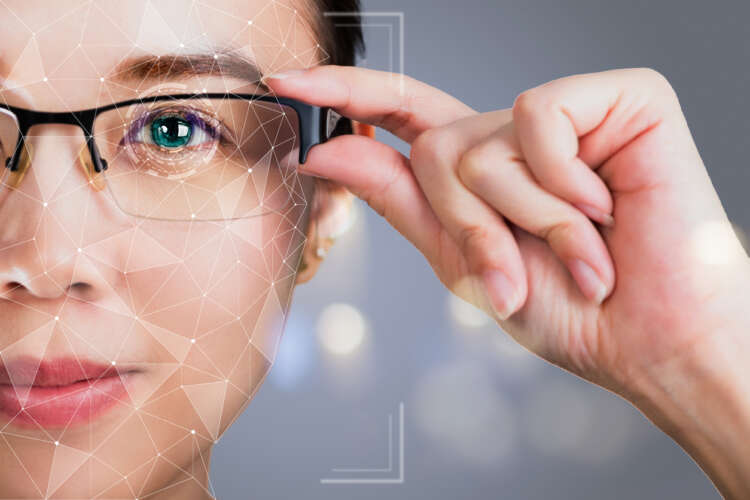Banking
Facial Recognition – The Future Of Banking


Financial institutions have multiple pain points, often leading to direct revenue loss, or indirect loss through inefficiency and poor customer experience. These issues – security for the financial institution and account holders, and providing the ultimate customer experience – can be solved with one solution – facial recognition.
Leveraging the right facial recognition technology improves security for the bank in multiple ways, both physically and financially, in the form of access control and fraud protection. Global losses from payment fraud has tripled from $9.84 Billion in 2011 to $32.39 in 2020*, so the need for stronger fraud prevention is only increasing. Moreover, CCTV can be used in tandem with facial recognition to identify suspects of fraud or theft.
For the account holder, or the ‘customer’, facial recognition provides a higher level of security than older identification methods. When implemented alongside online banking it prevents others from accessing another individual’s accounts. Facial recognition can also be used in two-step authentication when transferring monies from bank accounts or used as the verification method when purchasing goods or services, both in-person and online.
The improved customer experience provided by facial recognition comes in multiple forms also. The financial security that facial recognition provides is a level of personal security that not all banks can offer. Transactions using facial recognition are far quicker than over verification methods such as text, or email. Meanwhile, at the bank, a seamless experience is provided by facial recognition as confirming your identity no longer requires revealing multiple elements of personal information. There is no place for human error when it comes to the care and protection of an individual’s money, facial recognition removes this possibility.
Security for financial institutions
There are currently multiple methods of providing security for financial institutions like banks and credit unions, both physically and digitally. Financial institutions are losing around 5 percent of their annual revenues to fraudulent activity*, and when total global revenues are in the trillions this is no small amount of money. Moreover, responding financial institutions claim they recovered less than 25 percent of fraud losses between 2015 and 2018**, demonstrating the necessity for fraud prevention rather than recovery.
Protect your physical assets:
Physically, access to important areas is restricted through the use of keycards and keypads, there are no retinal scans despite what James Bond may have you believe. However, these current methods are insecure – they can be stolen, exchanged or even guessed if the criminal opportunist is lucky enough.
Facial recognition implemented with access control can vastly increase the security of a financial institution. As previously mentioned, facial recognition eradicates the possibility of human error. No passwords, passcodes or key cards can be lost or stolen with facial recognition. More importantly, the accuracy of modern facial recognition softwares, like VisionLabs SDK, is so high that it cannot be spoofed and thus denies access to anyone who is not permitted in these areas.
Protect revenues with fraud prevention:
Implementing facial recognition security protects banks from various forms of financial fraud, such as chargeback fraud (where an individual tries to claim money back from transactions, based on a false notion that someone else made the payment). Between merchants and banks it is predicted that chargeback fraud will lead to $117.46 billion in losses by next year***. It is evident that new, and better, fraud prevention is necessary for financial institutions to protect themselves, and offer improved services to merchants.
VisionLabs liveness check is second-to-none, and prevents financial fraud by accurately determining the object in front of the system is a real, live person and not an image or video. VisionLabs uses state of the art one-shot liveness and incorporates a depth liveness check. This allows the technology to assess how far images being scanned are – down to the millimeter – essentially meaning the technology “understands” if the image is flat (like a photo or video of a face) or whether it is an actual face. Combine this with VisionLabs’ superior accuracy – the highest in the NIST report with an accuracy of 99.9% for both 1:1 and 1:To Many**** – then fraud is drastically reduced compared to other forms of protection.
This protects banks revenues by reducing the number of fraudulent activities, but also provides additional security to merchant customers, making that particular financial institutions business banking, or aquiring, product far more appealing.
Security for Customers
If facial recognition is introduced into transactions by a bank, then all purchases made must be confirmed by the account holder themselves meaning that petty theft of bank cards is no longer a concern of the account holder. Currently, banks have various methods of verifying online transactions, some ask for out-of-band authentication including verification via a mobile app, or email/text codes. However, this does not always prevent fraud. Therefore, facial recognition is the most secure way of protecting your customer’s funds from petty fraud through theft.
If implemented into online banking, fraudsters will be unable to access your account. This would include using facial recognition as a second or only verification method when transferring monies to an external account. Using text/email codes, or in-app verification, does not wholly prevent the transfer of large sums of money from a victim’s account, however facial recognition can plug this gap.
This security also extends to the handling of accounts in banks in person. If facial recognition would be a requirement for loans, transfers, mortgages etc, then this would prevent an individual from committing fraud via these services.
All of this comes together to protect the revenues of financial institutions. When customers fall prey to fraud, often the bank covers at least part of these losses – and if not they still spend resources on customer service and fraud investigations.
Enhanced Consumer Experience
Improving customer experience is important for financial institutions as it allows them to stand out from the competition in a congested marketplace. Facial recognition is one such way of providing a seamless customer experience, whilst also providing account holders with unparalleled security. The one shot liveness means the individual does not need to interact with the system, by blinking for example, making the system even more user friendly. Integrating facial recognition into the Know Your Customer process would be similar to unlocking your phone with your face with facial recognition – something everyone is now used to doing!
From the beginning of the customer experience, facial recognition can remove the need for various passwords, and personal information, required to open an account. This drastically improves the speed of the account opening process which is often found arduous.
With the vast increase in security, comes a heightened feeling of financial safety and calmness.
Being able to offer such security is a benefit, but the feeling it provides is an additional selling point for that individual financial institution, allowing them to attract more customers.
During transactions and online banking, facial recognition is so accurate that it can be the primary point of verification – rendering second verification through text or email unnecessary. Therefore speeding up the process and providing a more seamless experience that avoids customer frustration. If a bank implements this into their transaction processing for retailers (if they have adopted the hardware) and online shopping, this security and quick process will once again avoid any frustration on behalf of the customer.
Removing unnecessary and time consuming verification methods across a suite of banking offers such as acquiring loans, mortgagees but also across payments and online banking, improves the customer experience massively. With such a seamless process, the efficiency at which the bank can offer their services increases, whist an improved customer experience makes the institution stand out from the competition.
Conclusion
Implementing facial recognition into banking services will protect banks revenues directly through fraud prevention, and access control. VisionLabs’ unparalleled accuracy and anti-spoofing ensures fraud is reduced in it’s many forms compared to out-of-band authentication.
There are multiple uses, and benefits, to the implementation of facial recognition in banking and financial services – for both the bank and the customer. These uses improve security, physically and digitally, whilst also heightening the customer experience. Moreover, the use and adoption of facial recognition is only increasing, and new uses of facial recognition within all sectors including banking and finance will only increase. Now is the time for financial institutions to lead the way by adopting facial recognition!

-
Top Stories2 days ago
After VW plant victory, UAW sets its sights on Mercedes in Alabama
-
Business2 days ago
Mike Bahun and Fundraising University Make a Lasting Impact on Sports Programs Nationwide
-
Investing2 days ago
Forex Market Trends to Watch Out For in 2024
-
Top Stories2 days ago
Hedge fund borrowing hits five-year peak, Goldman Sachs says







